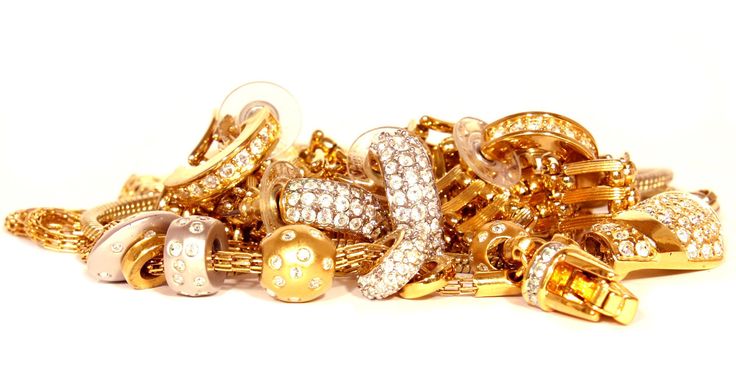When it comes to choosing an alternative to traditional diamonds, moissanite has become an increasingly popular option. Often compared to diamonds due to its dazzling brilliance and sparkle, many wonder if moissanite is actually a lab-grown diamond. While both moissanite and diamonds share certain similarities, they are fundamentally different in terms of their composition, origin, and properties. In this article, we’ll explore the differences and similarities between moissanite and lab-grown diamonds to help you understand why one might be chosen over the other.
What Is Moissanite?
Moissanite is a naturally occurring mineral made of silicon carbide (SiC), discovered in 1893 by French chemist Henri Moissan when he found small crystals in a meteorite crater. However, because natural moissanite is exceedingly rare, nearly all moissanite gemstones available on the market today are lab-created.
Lab-grown moissanite is produced in controlled laboratory environments using advanced technology that mimics the natural conditions under which the mineral forms. The result is a gemstone that looks strikingly similar to a diamond but is made from a different material—silicon carbide, instead of pure carbon.
What Are Lab-Grown Diamonds?
A lab-grown diamond, also known as a synthetic diamond or man-made diamond, is chemically identical to a natural diamond. Both lab-grown and natural diamonds are composed of crystalline carbon atoms arranged in a specific structure, which gives them their exceptional hardness, brilliance, and fire.
Lab-grown diamonds are created through two primary methods:
- High Pressure High Temperature (HPHT): This process replicates the natural conditions under which diamonds form in the Earth’s mantle, subjecting carbon to high pressure and temperature.
- Chemical Vapor Deposition (CVD): In this method, carbon-rich gases are broken down in a vacuum chamber to deposit carbon atoms onto a substrate, which gradually crystallizes into a diamond.
Lab-grown diamonds are made using carbon, the same as natural diamonds, making them optically, chemically, and physically identical to diamonds found in the Earth’s crust.
Moissanite vs. Lab-Grown Diamonds: Key Differences
Now that we know what each gemstone is, let’s look at how moissanite and lab-grown diamonds compare in terms of their key characteristics:
- Composition:
- Moissanite: Composed of silicon carbide (SiC).
- Lab-Grown Diamond: Made of crystalline carbon (C), the same as natural diamonds.
- Appearance:
- Moissanite: Known for its brilliance, moissanite has a higher refractive index than diamonds, meaning it sparkles more intensely under light. However, its “fire” (the dispersion of light into colors) is also more pronounced than diamonds, giving it a rainbow effect that some people find too flashy.
- Lab-Grown Diamond: Appears almost identical to natural diamonds. With a refractive index close to that of a diamond, it has a subtle sparkle that is often preferred by those who want a more classic, understated appearance.
- Hardness:
- Moissanite: It ranks 9.25 on the Mohs scale of hardness, making it one of the hardest gemstones, second only to diamonds.
- Lab–Grown Diamond: Lab-grown diamonds are 10 on the Mohs scale, just like natural diamonds, making them the hardest known material.
- Price:
- Moissanite: Typically, moissanite is much more affordable than both natural and lab-grown diamonds. It is an attractive option for people looking for a high-quality, budget-friendly gemstone.
- Lab-Grown Diamond: Lab-grown diamonds are usually less expensive than natural diamonds, but they are still more expensive than moissanite due to the cost of the technology required to create them.
- Durability:
- Moissanite: Moissanite is highly durable and scratch-resistant, but due to its slightly lower hardness compared to diamonds, it may show wear over time in high-traffic jewelry, such as engagement rings.
- Lab-Grown Diamond: Lab-grown diamonds are just as durable and resistant to scratching as natural diamonds, meaning they are an excellent choice for everyday wear.
- Environmental Impact:
- Moissanite: Since most moissanite is created in a lab, it is considered a more environmentally sustainable choice than mined diamonds, which can have significant ecological and ethical concerns.
- Lab-Grown Diamond: Lab-grown diamonds are also a more environmentally friendly option compared to mined diamonds, as their production involves less energy consumption and eliminates the environmental destruction caused by mining.
Is Moissanite a Lab-Grown Diamond?
While both moissanite and lab-grown diamonds are created in a laboratory setting, moissanite is not a lab-grown diamond. The two are made from different materials—moissanite from silicon carbide and lab-grown diamonds from carbon—and they have distinct physical properties. While they may appear similar at first glance, the differences in composition, sparkle, and hardness set them apart.
Moissanite is often chosen by consumers seeking a gemstone that offers exceptional brilliance and a lower price point, while lab-grown diamonds are favored by those who want the appearance and properties of a real diamond, but at a more affordable price and with fewer ethical concerns than mined diamonds.
Which Is the Right Choice for You?
When deciding between moissanite and lab-grown diamonds, the right choice depends on your personal preferences and priorities. Here are a few considerations to help guide your decision:
- Budget: If you’re looking for a more affordable option, moissanite offers excellent value while still providing stunning beauty.
- Brilliance: If you love a gemstone with intense sparkle and fire, moissanite might be the ideal choice. However, if you prefer the more subtle brilliance of a diamond, a lab-grown diamond would be better.
- Durability: For a gemstone with maximum durability that can withstand daily wear, a lab-grown diamond is an excellent choice.
- Ethical Considerations: Both moissanite and lab-grown diamonds are ethically produced, but moissanite is an even more sustainable option, as it is produced using less energy.
Conclusion
In summary, moissanite is not a lab-grown diamond. While both are synthetic gemstones, they differ in their chemical composition and physical properties. Moissanite, made from silicon carbide, is known for its dazzling brilliance, affordability, and durability, making it a popular alternative to diamonds. On the other hand, lab-grown diamonds, composed of carbon, are chemically identical to natural diamonds and offer an ethical, more affordable option for those seeking the classic appeal of diamonds.
Ultimately, whether you choose moissanite or a lab-grown diamond depends on your individual preferences, budget, and values. Both options provide a beautiful, ethical, and cost-effective alternative to traditional mined diamonds.


